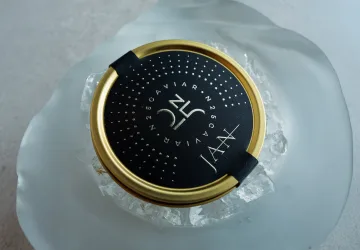7 minute read
If you’ve ever wandered through a Las Vegas auto auction, you’ve probably come across cars that make your heart race. You know, the ones—sleek, vintage, and dripping with style. But here’s a question that pops up every time we spot one of these beauties: When does a car actually become a classic? Is it when it hits a certain age? Or is there something else that qualifies it for that prestigious title?
Whether you’re a car enthusiast or just someone who appreciates the finer things in life, you’re in for an exciting ride. Let’s dive into what makes a car a classic, why it matters, and how you can spot one.
What Is a Classic Car?
Before we jump into the details, let’s define what we mean by a classic car. Simply put, a classic car is a vehicle that stands the test of time, both in terms of its design and its value. But there’s more to it than just being old. For many, a classic car is something that evokes a sense of nostalgia. It’s not just any old ride – it’s a car with personality, style, and a story.
So, does age alone make a car a classic? Well, not exactly. There’s a bit more to the equation. Let’s take a closer look.
When Does a Car Become a Classic?
There are a few key factors that come into play when determining whether a car is considered a classic. These include age, rarity, condition, and market value. It’s not just about being old; a car needs to hit a certain sweet spot that sets it apart from the rest.
The Age Factor
First things first: Age matters. In most cases, a car is considered a classic if it’s at least 20 to 25 years old. But age alone isn’t enough to make it “classic.” Imagine this: You have a car that’s 30 years old, but it’s in terrible condition and isn’t rare at all. Would you consider it a classic? Probably not.
That’s why many classic car enthusiasts also look at other factors like the car’s rarity and condition. Age is just one piece of the puzzle.
The Rarity Factor
The rarity is huge. Think of it like this: You’re at a party, and everyone’s wearing the same T-shirt. It might be cool, but there’s nothing special about it, right? Now, imagine you walk in, and you’re the only one with a unique vintage T-shirt. Suddenly, your shirt is the center of attention.
It’s the same with cars. A classic car needs to be something that stands out. This could mean that the car was produced in limited numbers, or maybe it was only available in specific regions. Cars like the Ferrari 250 GTO or Shelby Cobra are rare gems, and that rarity is a huge part of why they’re considered classics.
Condition and Restoration
Ever heard the saying, “It’s not what you have, but how you take care of it”? Well, this rings true for classic cars. A car might be old, but if it’s not in good shape, it won’t carry the same prestige as one that’s been properly maintained. In fact, restoration is often part of the process when bringing a car back to its former glory.
A well-restored car can often fetch higher prices than one that’s simply been sitting in a garage. Think of a vintage car like a wine – the older it gets, the more valuable it can become, but only if it’s kept in good condition.
Market Value
Finally, the market value plays a significant role in determining whether a car becomes a classic. In simple terms, classic cars are often valuable because they are highly sought after. But here’s the kicker: Not every old car automatically increases in value.
Certain models, especially those with a cult following or a deep connection to car culture, tend to increase in value over time. A car’s brand, its role in automotive history, and how it’s perceived by enthusiasts can all affect its worth. For instance, the Chevrolet Corvette has always been a symbol of American automotive excellence, and that’s reflected in its high market value.
Top 10 Classic Cars of All Time
Now that we know what makes a car a classic, let’s take a look at some of the most iconic cars that have earned their spot in the classic car hall of fame. These vehicles have all the right qualities: age, rarity, condition, and market value. If you’re ever lucky enough to own one of these beauties, consider yourself part of automotive history.
1. Ferrari 250 GTO
Produced between 1962 and 1964, the Ferrari 250 GTO is one of the rarest and most expensive cars in the world. Only 36 were made, and its value continues to rise as it becomes even more coveted by collectors. This car is often considered the pinnacle of Ferrari’s racing legacy.
2. Shelby Cobra 427
With a reputation for power and agility, the Shelby Cobra 427 was built for performance. Only 360 units were ever made, making it one of the most iconic American sports cars. Its raw power and sleek design make it a true collector’s dream.
3. Chevrolet Corvette (C1)
The first generation of the Corvette, produced from 1953 to 1962, is a true American classic. Known for its striking looks and speed, the Corvette has become a symbol of the American automotive industry. The C1 is especially sought after for its retro charm.
4. Porsche 911 (1964-1989)
The Porsche 911 is an automotive legend. Known for its distinctive design and exceptional handling, the 911 has been in continuous production for over 50 years. Early models, especially the ones from the ’60s and ’70s, are highly collectible today.
5. Jaguar E-Type
Launched in 1961, the Jaguar E-Type was hailed as the most beautiful car in the world by none other than Enzo Ferrari. With its curvaceous design and powerful engine, the E-Type remains a favorite among classic car enthusiasts.
6. Volkswagen Beetle
The Volkswagen Beetle is one of the most recognizable cars in history. Produced from 1938 to 2003, its quirky design and simple mechanics have made it a beloved classic. Whether you’re a fan of its history or its charm, the Beetle has earned its place in automotive history.
7. Aston Martin DB5
Known as the “James Bond” car, the Aston Martin DB5 gained fame in the 1964 film Goldfinger. Its timeless design, luxurious features, and powerful engine make it one of the most sought-after classic cars today.
8. Ford Mustang (1965-1973)
The Ford Mustang was introduced in 1965 and quickly became an American icon. With its powerful engines and sleek design, the Mustang remains one of the most beloved classic cars in the world. Early models, particularly from the ’60s, are highly sought after.
9. Maserati 3500 GT
Produced from 1957 to 1964, the Maserati 3500 GT was the first Maserati to feature a fully independent rear suspension. Known for its Italian elegance and sporty performance, it remains a gem for car collectors.
10. Mercedes-Benz 300SL Gullwing
The Mercedes-Benz 300SL Gullwing, introduced in 1954, is one of the most iconic cars ever built. With its distinctive gullwing doors and cutting-edge technology, the 300SL was ahead of its time and remains one of the most admired classics.
To Conclude
So, when does a car become a classic? While there’s no exact formula, it generally comes down to a combination of age, rarity, condition, and market value. Whether it’s a Ferrari 250 GTO or a Ford Mustang, these cars have earned their status as icons of automotive history.
Now that you know what makes a car a classic, why not start exploring the world of classic cars for yourself? Whether you’re browsing an online auto auction or just admiring from afar, there’s no better time to appreciate these timeless treasures.
Ready to find your own classic? Take a look at some of the incredible options available – who knows, you might just find your dream car!




